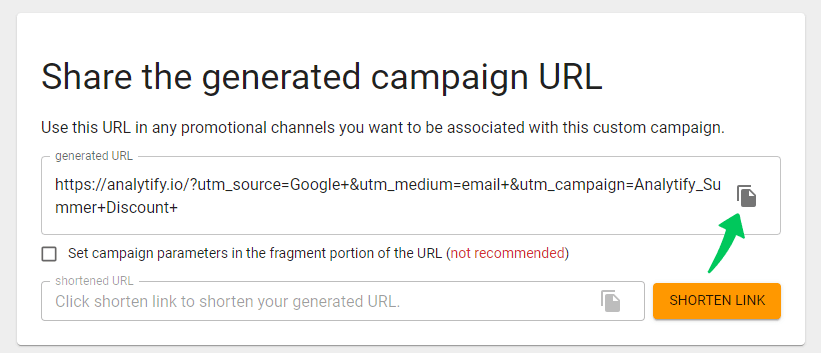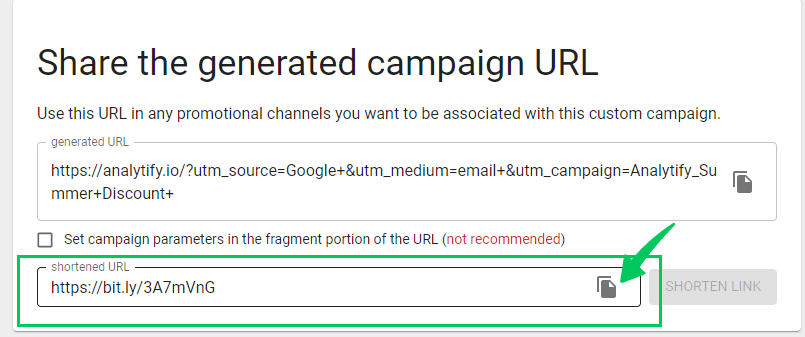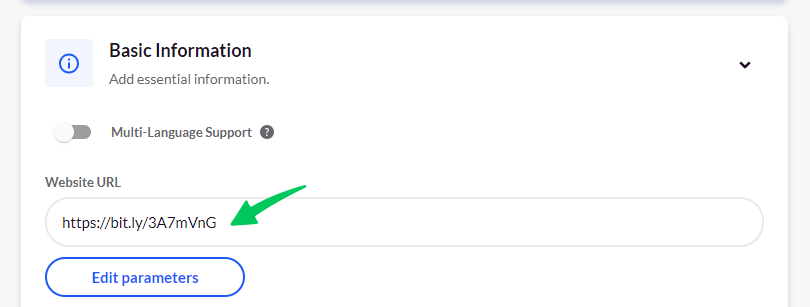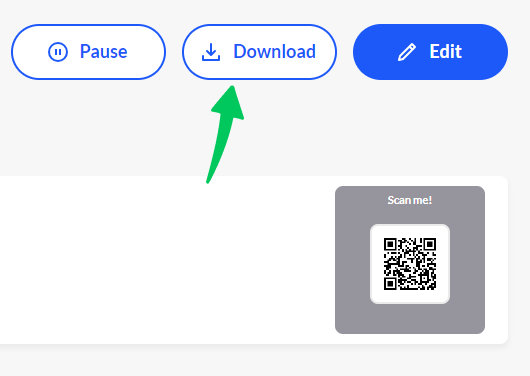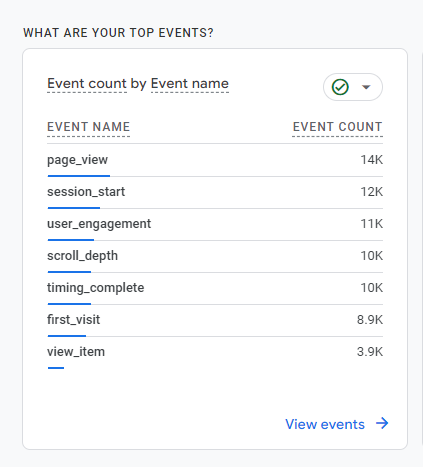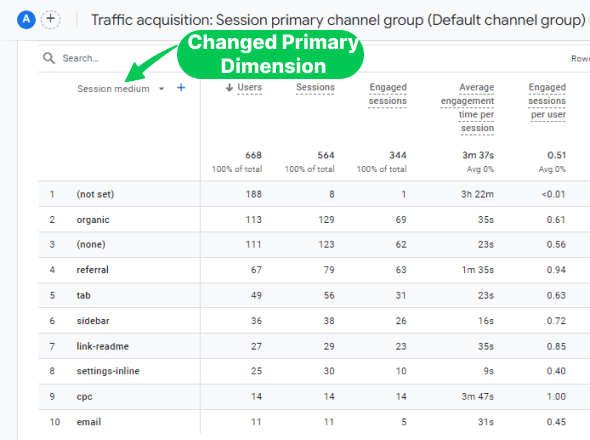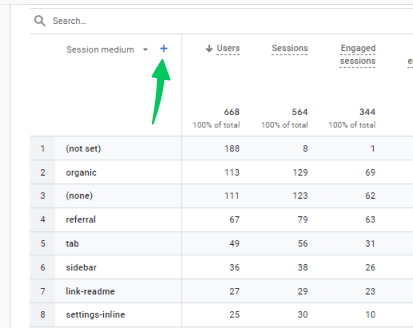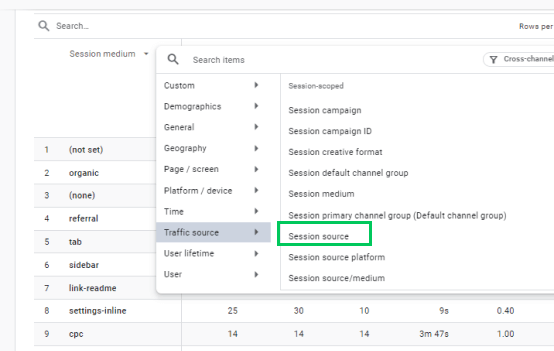Google Analytics QR Code Tracking (Explained 2025)
Are you curious about tracking the performance of your QR codes? Google Analytics makes it simple to monitor who’s scanning your codes and visiting your website.
Understanding the effectiveness of your QR codes , whether printed on posters, flyers, or online, can help you gain valuable knowledge about your marketing campaigns.
In this guide, we’ll explore how to set up Google Analytics QR code tracking , analyze the collected data, and optimize your campaigns for maximum impact. It is perfect for anyone who wants to better understand their audience.
Let’s get started!
GA4 QR Code Tracking (TOC):
What is QR Code Tracking?
A QR code, which stands for Quick Response Code, is a fancy barcode on steroids. You might see that square-shaped black-and-white pattern on flyers, magazine ads, or product packaging.
Unlike regular barcodes holding basic product information, QR codes can store a surprising amount of data. This data can be a website address, a phone number, a discount code, or even a text message.
QR code tracking is the process of understanding how users interact with QR codes. It allows you to see if people scanned your QR code and what they did after scanning it. This data can inform about future QR code campaigns.
QR code tracking works by adding UTM tags to the URL encoded in the QR code. UTM tags provide information about the QR code’s source, medium, and campaign. When a user scans the QR code, this data is sent to Google Analytics 4 (GA4).
Benefits of GA4 QR Code Tracking
QR codes are a convenient way to bridge the gap between the physical and digital worlds. But without tracking, they’re like one-way streets – users scan them, leaving you in the dark about the impact. Here’s how Google Analytics 4 (GA4) empowers you to reveal the true potential of QR code analytics:
- Track Scans and Conversions: Measure campaign success by tracking the number of QR code scans that lead to website visits, purchases, or other desired actions. Revenue generated from QR code scans to understand their effectiveness.
- UTM Parameters for Optimization: Utilize UTM parameters to differentiate QR code campaigns, optimize performance, and identify the most successful ones.
- Understand Your Audience: Gain valuable demographics and user behavior data to tailor your marketing messages for better engagement.
- Map the Customer Journey: Combine scan data with website behavior in GA4 to map the entire customer journey triggered by your QR code. This helps identify potential roadblocks and optimize the user experience.
Tracking QR Codes in GA4 isn’t just about counting scans; it’s about revealing user behavior data. You can measure success, optimize campaigns, understand your audience, and ultimately drive actual results.
Limitations of QR Code Tracking with Google Analytics
QR codes are like mini portals to information, but not all their interactions can be tracked within Google Analytics 4 (GA4). Here’s what falls outside GA4’s tracking capabilities:
- Direct Actions: QR codes that trigger instant actions like opening your email app, sharing contact details, or sending a text message can’t be directly tracked by GA4. You won’t see how many people used these functionalities through your QR code.
- Direct Downloads: Want to track downloads of a PDF manual linked to a QR code on your product packaging? GA4 can’t tell if someone downloaded the file by scanning the code.
These limitations exist because GA4 primarily focuses on website and app behavior. When a QR code leads to an action outside these domains, GA4 lacks the visibility to capture that data.
The Best Way to Track Downloads with QR Code
While GA4 can’t directly track downloads triggered by QR codes, there’s a strategy to know how many people download your file:
1. Create a Landing Page:
Build a simple webpage with a clear call to action. This page should host the downloadable file (like a PDF manual) you want users to access. Include a prominent button or link labeled appropriately (e.g., “Download PDF Manual”).
2. Build a UTM-tagged link for this landing page:
Build a UTM-tagged link for this landing page. Use this UTM-tagged link in your QR code instead of linking directly to the PDF.
3. Enable Download Tracking in GA4 :
For more information, enable GA4’s “automatic tracking of downloads” feature. To do this, Ensure that the “File downloads” option is enabled within the Enhanced Measurement settings.
For more information on download tracking, refer to this detailed guide, How to Track File Downloads in Google Analytics 4.
You’ll finally see how many people downloaded the file from your landing page.GA4 can show you what other users did on your website after downloading, providing a more comprehensive picture of their journey.
Let’s explore how to build those powerful UTM parameters for your QR code tracking!
How to Set up QR Code Tracking in Google Analytics 4?
Here’s a step-by-step guide on how to Track QR codes with Google Analytics 4 :
Step 1: Choose Your QR Code (Static vs. Dynamic QR Code)
You have two options for creating your QR code:
- Static QR Codes: These basic codes link to a fixed URL. They’re good for simple actions like opening a website or sharing contact information. However, once created, the destination URL cannot be changed.
- Dynamic QR Codes: These offer more flexibility. They link to a short URL that redirects users to the actual destination, allowing you to update the target URL even after the code is printed. They may come with a subscription fee.
For most marketing campaigns, dynamic QR codes are the better choice. However, a static QR code might be sufficient if you need a simple, one-time-use code with no tracking requirements.
The core process of generating a basic QR code is essentially the same for both static and dynamic types. Some additional steps are required to make the dynamic flexible. So the steps for the core process are following:
Step 2: Add UTM Parameters To Your Link
Imagine adding tiny labels to your QR code link, which, in this case, are UTM parameters. UTM parameters are the most common way to track links and their performance in marketing campaigns. There are five main UTM parameters, each providing a specific piece of information:
- utm_source: This identifies the source of the traffic, such as “Facebook,” “Google,” “email_newsletter,” or “flyer.”
- utm_medium: This specifies the advertising medium used, like “organic,” “CPC” (cost-per-click), “email,” or “qr_code.”
- utm_campaign: This allows you to categorize the traffic based on a specific marketing campaign, like “summer_sale,” “product_launch,” or “brand_awareness.”
- utm_content: This helps differentiate between different versions of the same ad or content within a campaign. For example, you could use “banner_top” or “banner_sidebar” for different placements of the same ad.
- utm_term: This is primarily used for paid search campaigns and captures the specific keyword that triggers the ad.
Many free UTM Campaign Builder Tools are available online. In this guide, we use Google Analytics Campaign URL Builder.
Simply enter information about your campaign (source, medium, name, etc.)
The tool will generate a perfectly formatted UTM-tagged link for you.
Step 3: Shorten Your Link
You can use the shortened URL in the QR code generator. It’s a good practice to do so for a few reasons:
- QR codes rely on black-and-white squares packed tightly together. The longer the URL, the smaller these squares become. Scanning a complex QR code with long URLs can be frustrating for users, especially those with less-than-perfect eyesight or unsteady hands.
- Long UTM-tagged URLs can be visually unappealing and take up more space in your QR code. A shortened URL makes the code cleaner and more accessible to scan, allowing you to maintain a clean visual presentation.
- Long URLs can be prone to typos during entry. A shortened URL minimizes this risk of errors.
Use a reputable URL shortener to shorten your UTM-tagged link, contributing to a more effective QR code campaign. Avoid services that add their own tracking or advertisements to the shortened URL. Opt for a shortener trusted by marketers, like Bitly or TinyURL.
Here, I am using the Google Analytics tool to shorten the URL. Click on the shorten link tab.
It will generate the Shortened URL. Simply copy this URL to generate a QR code.
Remember, the shortening process doesn’t affect the UTM parameters embedded in the original link. These will still be passed through to GA4 and provide valuable campaign data.
Step 4: Generate the QR code
With your shortened URL in hand, it’s time to create the QR code itself. Here’s how:
- Find a Free QR Code Generator
Many user-friendly online QR code generators are available. Search for “free QR code generator” and choose a reputable one.
- Paste Your Shortened URL
Once you’ve opened your chosen generator, locate the field where you can paste your shortened URL. Remember, it’s the shortened version you created earlier, not the original long URL.
- Generate and Download
After adding a shortened URL, Your QR code will be displayed on the screen. Then click on the Download QR code tab.
If you use the QR code in print materials (flyers, magazines, etc.), pay close attention to the generator’s resolution options. Choose a high-resolution image (often denoted by “DPI” or “pixels”) to ensure the code remains scannable even when printed.
- Save and Use Your QR Code
Finally, download your QR code as an image file (usually PNG or JPG) and save it to your computer.
You’re ready to integrate it into your marketing materials or display it wherever you want people to scan it.
Note: Some generators offer customization options like adding your logo or changing the color scheme. Explore these features if you want to personalize your QR code further.
By following these steps, you’ll have a scannable and effective QR code ready.
Step 5: Test The QR code
Before presenting your QR code to the world, take a moment to ensure it functions flawlessly and integrates seamlessly with GA4. Testing is essential because:
- Avoid 404 Errors: A broken QR code leading to a dead-end (404 error page) frustrates users and wastes the marketing budget. Testing beforehand ensures a smooth user experience.
- Verify GA4 Tracking: This is the perfect opportunity to check if your QR code tracking is set up correctly in GA4. This will ensure that your data collection starts smoothly.
Here’s how to test your code:
Test Your QR Code By a Successful Scan:
Grab the phone and scan the code. Your phone should automatically recognize and decode the QR code. Depending on your setup, you might see one of two things:
- Shortened URL Display: The phone displays the shortened URL you created earlier.
- Landing Page Redirect: You’re redirected to the correct UTM-tagged landing page within GA4 (if you use a landing page).
By Verifying your GA4 Data:
Note: GA4 updates can take up to 24 hours to complete. After launching your campaign with real users, allow a day for data to populate your reports.
Here’s how to verify your GA4 data after a successful scan:
- Navigate to the Real-time report within GA4. It might take a short while for data to appear.
- Scroll down to the card labeled “Event count by Event name” and click “page_view.”
- If everything functions as expected, you’ll see the UTM tag parameters from your shortened URL displayed here.
Verify UTM Values (Optional): Click on each parameter to confirm that the values you used during URL creation match what appears in GA4 (e.g., campaign source, medium, etc.).
Congratulations! If you see the correct UTM parameters, you’ve successfully set up Google Analytics QR code tracking.
Where to Find QR Code Tracking Data in GA4?
So, you’ve set up QR code tracking with proper UTM parameters. Where exactly do you find this data in Google Analytics 4?
Here’s your guide to navigating GA4 reports of your QR code:
Step 1: Access Your Reports
Navigate to the Reports section within Google Analytics 4.
Step 2: Choose the Acquisition Report
Choose the Acquisition tab under the life cycle. Then, select the traffic acquisition report.
This report provides a broad overview of your website traffic and how users find you. It can be helpful to see how QR code traffic compares to other channels, such as organic search or social media.
Step 3: Change the Primary Dimension
By default, the report might show data by channel grouping (e.g., Organic Search, Social).
To see UTM details, change the primary dimension to “session medium.” Under “Session medium,” you should see entries that match the UTM parameters you used for your QR code campaign.
Remember: Data from new scans might take a slight delay (up to 24 hours) before populating your GA4 reports.
Step 4: Add Secondary Dimensions
Secondary dimensions provide additional detail to your Google Analytics reports. By adding “Session Source” as a secondary dimension to your GA4 QR code tracking, you can gain valuable knowledge about Traffic Sources and Identify where your QR code scans are coming from (e.g., social media, email, print materials). Determine the effectiveness of different QR code campaigns based on their sources.
By leveraging secondary dimensions, you can extract maximum value from your tracking QR code efforts and help enhance your marketing campaigns.
You can add a secondary dimension, Session Source, by clicking the plus icon.
Following these steps, you can effectively track and analyze Google Analytics QR Code data . This data can be invaluable for understanding user behavior, campaign performance, and optimizing QR code marketing efforts.
QR Code Tracking in WordPress With Analytify
Analytify is the best WordPress plugin designed to simplify complex Google Analytics data. A user-friendly interface and comprehensive features empower businesses to make perfect decisions and optimize their marketing strategies.
Join 50,000+ beginners & professionals who use Analytify to simplify their Google Analytics!
How To Track QR Code With Analytify?
To effectively track your QR codes using Google Analytics, Analytify offers a streamlined process:
Step 1: Install and Activate Analytify
Begin by installing the Analytify plugin on your WordPress website. This user-friendly plugin seamlessly integrates with Google Analytics, providing a valuable understanding of your website’s performance.
Step 2: Create a Custom URL
Utilize Analytify’s built-in URL builder to create a unique URL. Include relevant UTM parameters in your QR code’s URL, such as utm_source, utm_medium, and utm_campaign. This will enable you to track your campaigns’ performance accurately.
Step 3: View QR Code Campaign Reports
Analytify’s UTM campaign tracking feature can help you automatically detect and analyze UTM parameters from QR code scans, providing valuable insights into user behavior.

Analytify’s intuitive dashboard allows you to monitor the performance of your QR code campaigns directly within your WordPress dashboard. Track key metrics such as visitors, revenue, and conversions associated with each campaign.
By following these steps and using Analytify’s powerful features, you can effectively track and analyze your UTM campaigns. Its user-friendly interface and comprehensive features, such as UTM campaign tracking, make it an invaluable asset for any WordPress website.
More WordPress Analytics Features
Here are the following key features of Analytify:
- Seamless Google Analytics Integration: Analytify seamlessly integrates with Google Analytics, providing a unified view of your website’s performance within your WordPress dashboard.
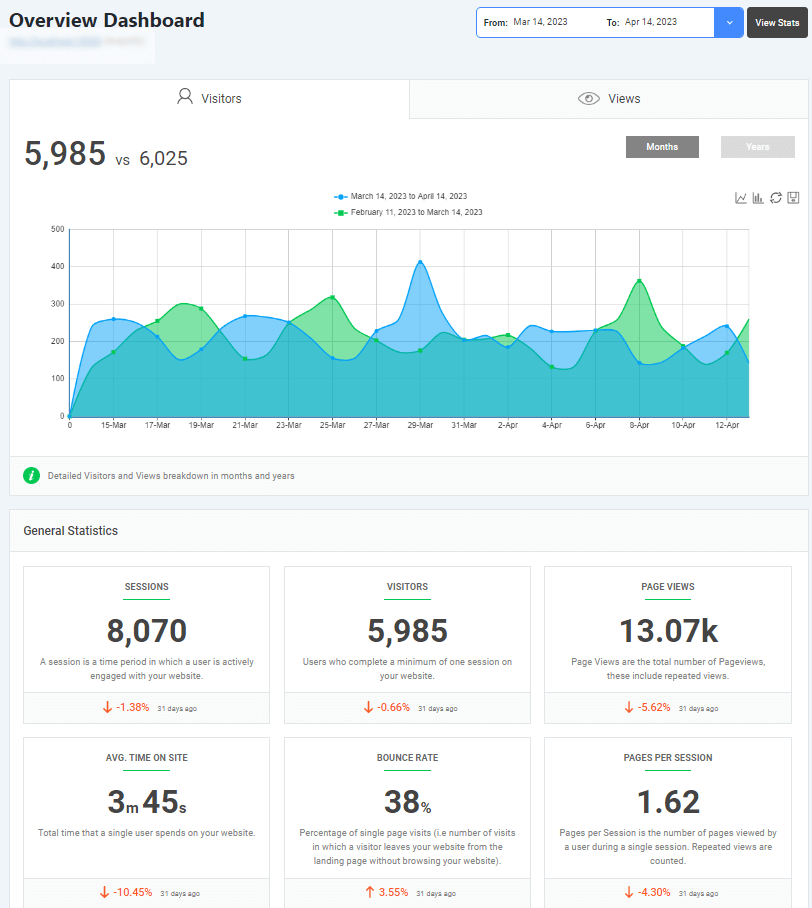
- Real-Time Insights: Stay updated with real-time data on website traffic, page views, and user behavior.
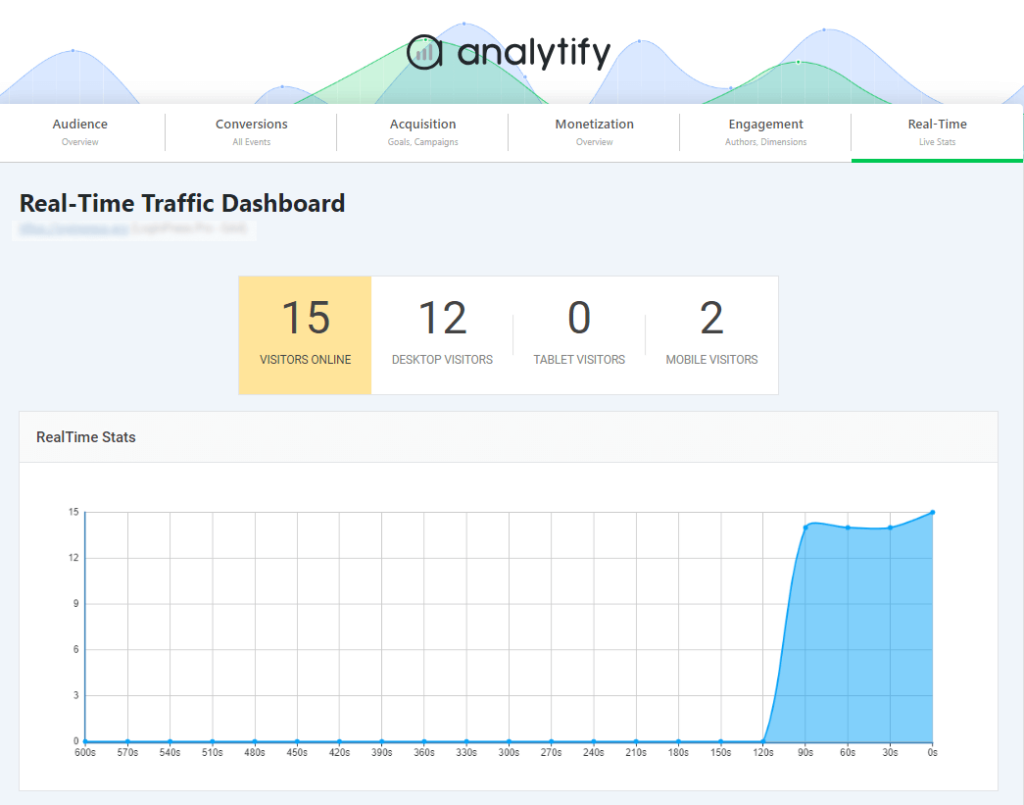
- In-Depth Reporting: Access comprehensive reports on audience demographics, traffic sources, and content performance.
- E-commerce Tracking: For online stores, track sales, revenue, and product performance (with compatible plugins like WooCommerce or Easy Digital Downloads).
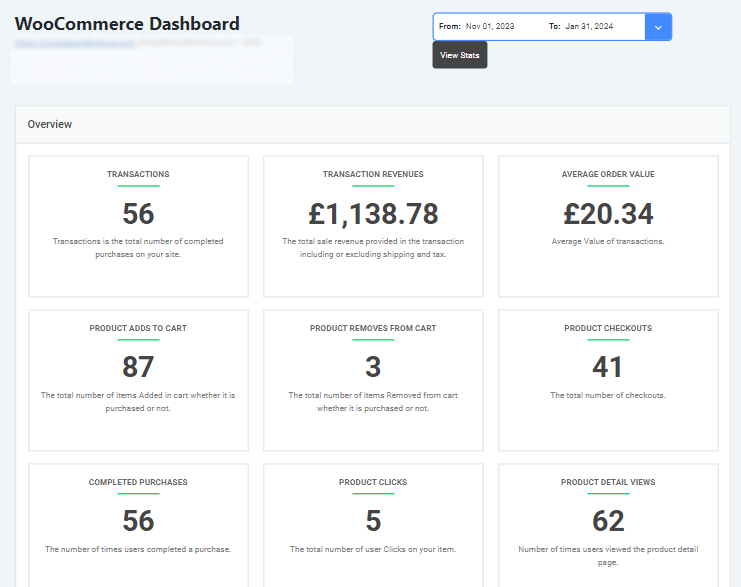
- Goal Tracking: Set and monitor custom goals to measure user behavior and conversions.
- Event Tracking: Track specific user interactions (e.g., button clicks, video plays) for deeper insights.
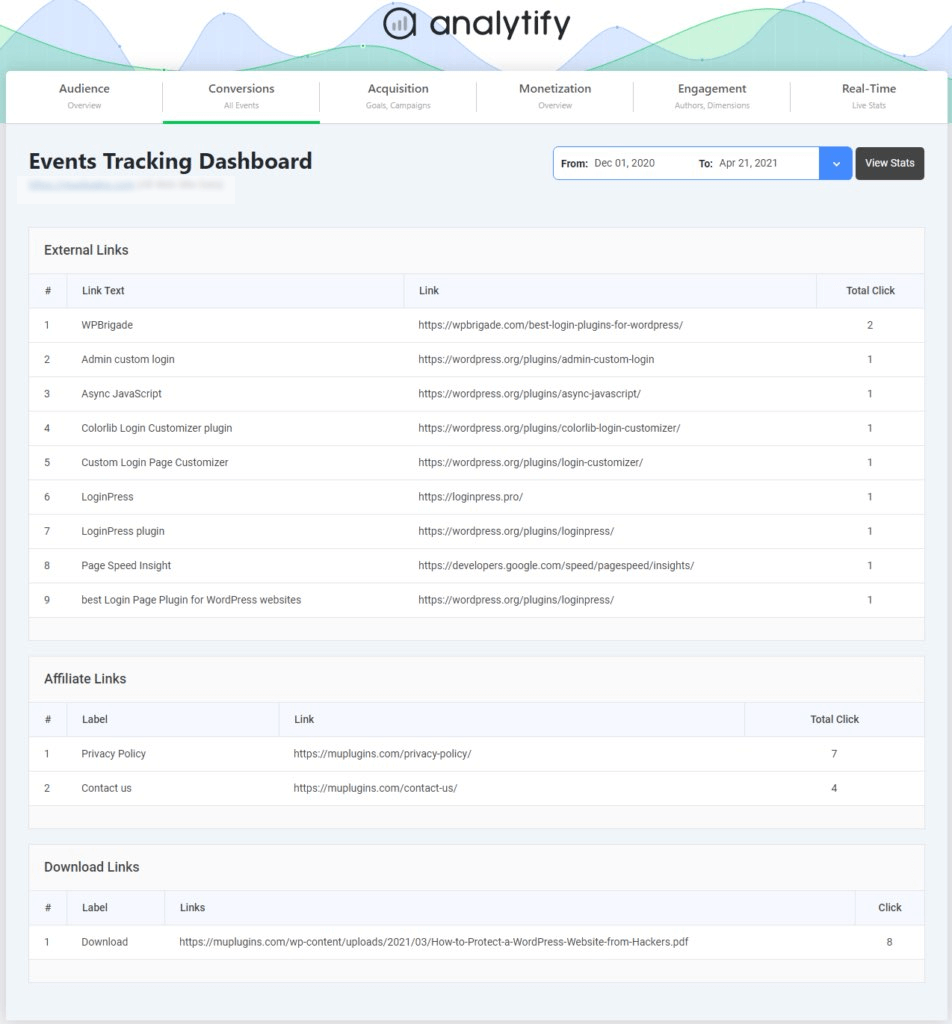
- User-Friendly Interface: Analytify’s intuitive dashboard makes it easy to understand complex analytics data.
- UTM campaign tracking: UTM parameters are essential for tracking the effectiveness of your marketing campaigns. Analytify simplifies UTM campaign tracking.
Google Analytics QR Code Tracking FAQs
1. What are the parameters of a QR code?
QR codes can have two main types of parameters:
Data Parameters: These define the information encoded within the QR code itself. This could be a website URL, plain text, contact information, or a specific location.
Visual Parameters: These influence the appearance and functionality of the QR code image. They are often used when generating QR codes through online tools or APIs. For example, Size, Margin, Background Color, Output Format (e.g., PNG, SVG), etc.
2. How are QR codes measured?
QR codes can be measured in two main ways:
Scans: Track the number of times the code is scanned using a QR code generator with tracking features.
Actions After Scan: See what users do after scanning by integrating your QR code with website analytics (e.g., Google Analytics) to track website visits, purchases, or other actions.
3. What is the difference between QR and Bar codes?
Both encode information, but in different ways:
Dimensions: QR codes are 2D, holding more data. Barcodes are 1D, having less data.
Information: QR codes can store website links, text, and vCards. Barcodes typically store product IDs or serial numbers.
Scanning: QR codes can be scanned from any direction. Barcodes require a specific orientation.
Complexity: QR codes are more complex and can withstand damage, while barcodes are simpler and more susceptible to damage.
4. What are the UTM parameters for tracking?
UTM codes are short text tags added to URLs to track where website traffic comes from (source), how it arrived (medium), and details about the campaign (campaign, content, term).
5. How do you analyze QR code tracking data?
Analyzing QR code data depends on the type of code and tracking used:
Simple QR Codes: These just contain data like a website URL. You can only analyze them with basic functionality (e.g., did the link work?).
Dynamic QR Codes with Tracking: These allow analysis through the QR code generator’s dashboard. Here, you can see Total Scans (including repetitive users ) and Unique Scans (users who scanned the code once).
Final Thoughts on GA4 QR Code Tracking
In conclusion, Integrating QR code tracking with Google Analytics 4 (GA4) provides a framework for enhancing your marketing campaigns. By implementing UTM parameters and dynamic QR codes, businesses can gain valuable knowledge about user behavior, track conversions, and optimize campaign performance.
Before launching, test your QR codes, utilize high-resolution images for print, and explore GA4’s comprehensive reports to map the customer journey and identify key touchpoints.
With these strategies, QR codes can become powerful tools for driving engagement and growth. For further information on enhancing your tracking capabilities, check out our detailed Google Analytics 4 Click Tracking guide.
We’d love to hear from you! Share your thoughts, experiences, and questions in the comments below. Your feedback helps us create better content!



